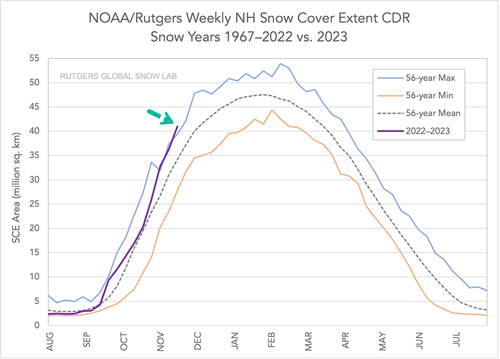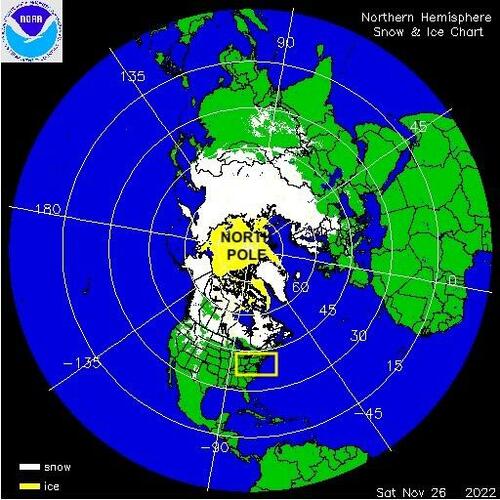The problem with models is that they are just that: "Models". They give us an indication of what we think may happen based on what we know and can infer from the data... but new data can change radically the outcome in a typical Bayesian fit.
The reality is that we are not sure how the earth atmosphere really works. Too many factors, too much complexity. Just as an example, the atmosphere is simplified as 1 point by 500m cube frames in space. This represents already a huge improvement on the previous 1km cubes and a significant increase in calculation while remaining full of... holes.
The COP27 climate change conference wrapped up last month. World leaders flew in private jets to Egypt to discuss how fossil fuels were quickly heating the planet to the point of no return, as humanity was doomed if crucial climate change policies weren't implemented. But while the climate alarmist leaders met in the desert, November's snowfall across the Northern Hemisphere was running at rates exceeding a half-a-century average.
NOAA and Rutgers University released new data that showed snow cover across the Northern Hemisphere reached the highest level since measurements began in 1967 and are currently above the 56-year mean.
Here's the Rutgers Global Snow Lab snow coverage map across the Northern Hemisphere.
And another from NOAA with more resolution.
"Extensive snow extent early in the season is an indicator of persistent cold as we head into winter proper," weather blog Severe Weather Europe said.
Most mainstream media outlets overlooked this data because it is an inconvenient truth for the climate change narrative they're pushing.
A
severe winter for the Northern Hemisphere might complicate power grids
for western countries that are hellbent on disrupting energy flows by
sanctioning Russia, forcing the world into the worst energy crisis in a
generation. Since the US and Europe's natural gas storage facilities
have flipped into withdrawal season,
the clock starts as storage levels could quickly wind down if
temperatures stay below average, which would continue to boost energy
prices.




No comments:
Post a Comment